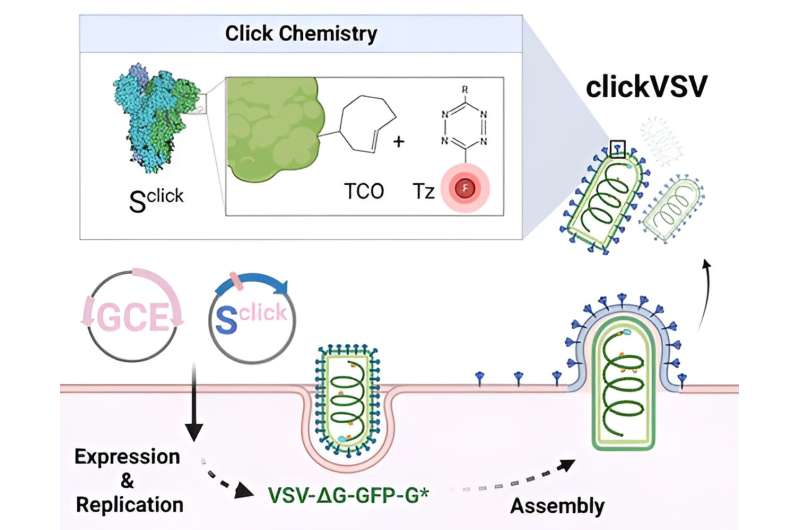This article has been reviewed according to Science X's editorial process and policies. Editors have highlighted the following attributes while ensuring the content's credibility:
fact-checked
peer-reviewed publication
trusted source
proofread
Re-engineered pseudoviruses for 3D mapping of infections open up new horizons in virus research

Pseudoviruses resemble impostors: Although harmless, they are designed in such a way that they can hardly be distinguished from their dangerous relatives. This makes them an invaluable tool in virus research. They can be used to precisely analyze infection pathways of dangerous virus variants.
A major challenge in this research area so far has been to make the pseudoviruses reliably visible under the microscope. This is because conventional labeling methods impair the activity of the "impostors" and thus falsify the imaging.
A team from the Rudolf Virchow Center—Center for Integrative and Translational Bioimaging at Julius-Maximilians-Universität (JMU) Würzburg, led by Professor Markus Sauer and Dr. Gerti Beliu, has now developed a solution: By combining genetic code expansion and click chemistry, a unique recognition feature for pseudoviruses was created that leaves their activity unaffected. These findings have been now published in the journal ACS Nano.
The novel "clickable" pseudoviruses are highly fluorescent. However, in terms of binding and penetration into cells, they have the same properties as their pathogenic relatives. Once inside the cells, however, they do not cause disease—this allows them to be handled under reduced biological risk levels in S1/2 standard laboratories.
"This method opens up completely new horizons for us in virus research. It's a leap forward in our ability to observe the complex dynamics of viral infections in living organisms using high-resolution microscopy methods," Sauer says.
Another advantage of the new method is its high detection efficiency. Compared to conventional immunostaining methods, the JMU team found a detection efficiency many times higher. This makes finer details and subtle processes of the infection process visible.
"The clickable pseudoviruses have the potential to revolutionize the way we study virus-cell interactions. It is as if we are using our microscopes to dive into a previously invisible world," explains Dr. Beliu.
More information: Marvin Jungblut et al, Re-Engineered Pseudoviruses for Precise and Robust 3D Mapping of Viral Infection, ACS Nano (2023). DOI: 10.1021/acsnano.3c07767
Journal information: ACS Nano
Provided by Julius-Maximilians-Universität Würzburg





















